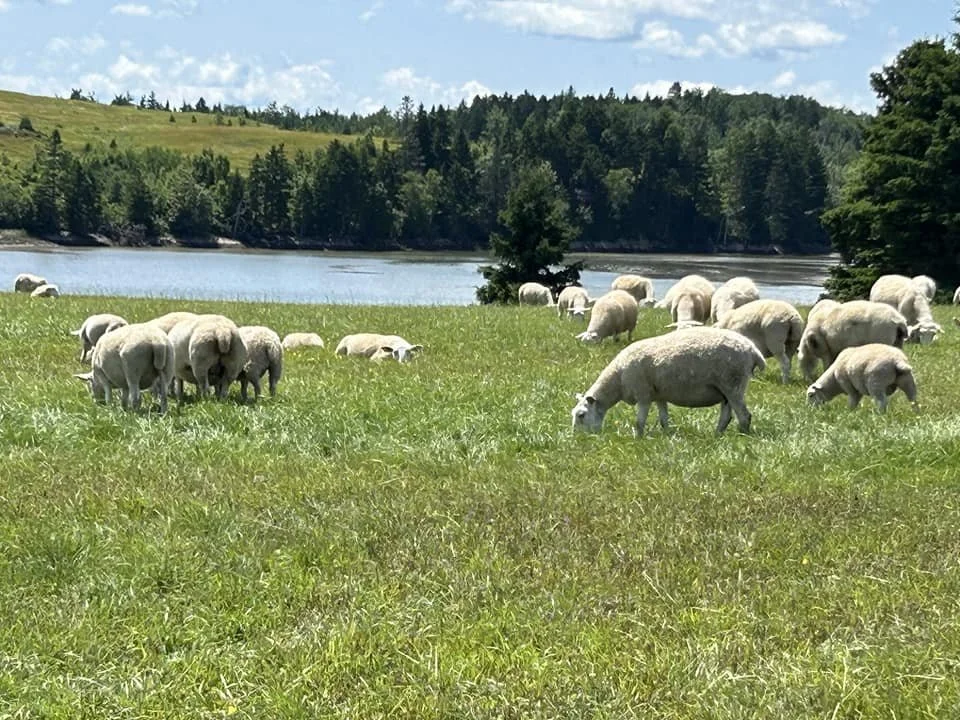Spinning into Fall
The sheep of Washington County's own Wild Wind Farm graze alongside saltwater, preparing fleeces for next year's shearing, which if I purchased in 2025, would reliably be turned into knitwear by 2042, at the latest, Lord willing and the creek don't rise. Photo courtesy Wild Wind Farm
It’s a spider’s world now, and we’re just living in it – or swatting it, or running through it, depending on the size of the surprise. Walking across the deck this morning, I felt the dreadful snap of a strong web that wasn’t there last night. Turning, I spotted a large web behind an Adirondack chair and made a mental note never to sit there again. On either side of the front door hang two formidable greeters, the kind no one wants to say hello to, one above each flower pot. To say nothing of what’s running between the garden fence and clothesline.
This isn’t the time of year to keep your eyes on your feet unless you’re that rare person who doesn’t mind a face full of spider.
But even though a tantalizing note of autumn is in the air this morning, and spiders have taken over the Earth, it’s still too soon to cozy up indoors. We must pace ourselves, conserving all of our sitting skills and hobbies for the dark and cold days of December through, well, April, when we’re really going to need them.
I believe this, and yet, an unused drum carder is calling to me from the front hall.
I won this spinner’s tool in a raffle at the Machias Fiber Festival several years ago and was gifted a bag of fleece from my neighbor, a sheep farmer, on which to practice. Since that time, knowing that I own such a thing has brought me some delight, like untapped potential in the attic.
A drum carder is made of two spiky drums, one larger than the other, and in the case of mine, a hand crank. As I understand it, one feeds uncombed wool clippings into the base, then cranks them through the tines of the drums, and in so doing, creates a wool batt with fibers nicely aligned for spinning.
Before the carding comes the breeding, raising, and shearing of sheep, then the skirting, washing, and picking of the fleece. After the carding (by drum or by hand), all that remains is to spin the wool into yarn then, in most cases, ply the spun wool strands together, then wash it to set the twist. Then you can begin your knitting, or your weaving, or your crochet.
And that is how our forefathers got socks.
My spinning wheel will need a good dusting before I put that batt to use, and we might need to use geological time to measure when that yarn will then become knitwear.
But the clock doesn’t start today. The forecast is 80, the garden is weedy, and I have a stick to cut cobwebs.

